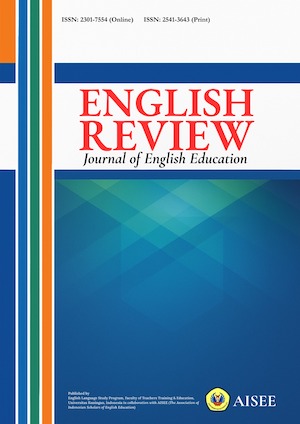METAPHOR ANALYSIS IN THE HIKAYAT SI MISKIN AS CLASSICAL MALAY LITERATURE
Abstract
Hikayat Si Miskin is one of the classical Malay literary works that is rich in cultural and moral values. In this work, the use of metaphors is one of the main tools to convey symbolic messages and enrich the aesthetics of the story. This study aims to analyze the metaphors contained in Hikayat Si Miskin using a semiotic approach and classical literary studies. This study found that the metaphors in this text function to describe the social struggle, religiosity, and dynamics of the main character's life. For example, "poverty" in the story not only describes the material condition, but also becomes a spiritual symbol for the journey towards awareness and devotion to God. In addition, natural metaphors, such as "sea" and "mountain," are used to represent the challenges of life that must be faced by the main character. This analysis shows that Hikayat Si Miskin not only stores narrative richness, but also offers insight into how classical Malay society understands life and universal values. The results of this study are expected to contribute to the study of classical Malay literature and broaden appreciation of the use of metaphors in the Nusantara literary tradition.All articles published in English Review: Journal of English Education (ERJEE) are licensed under the Creative Commons Attribution 4.0 International License (CC BY 4.0).
Copyright Ownership
Authors retain the copyright of their articles and grant ERJEE the right of first publication. The journal is granted a non-exclusive license to publish, reproduce, and distribute the article in any format, medium, or platform, provided that proper credit is given to the original authors.
License Terms – CC BY 4.0
Under the Creative Commons Attribution 4.0 International License, others are free to:
- Share — copy and redistribute the material in any medium or format
- Adapt — remix, transform, and build upon the material for any purpose, even commercially
As long as they:
- Provide appropriate credit to the original author(s) and source
- Provide a link to the license (https://creativecommons.org/licenses/by/4.0/)
- Indicate if any changes were made
There are no restrictions on the reuse, reproduction, or adaptation of published articles as long as attribution is properly given.
Author Warranties
By submitting a manuscript to ERJEE, authors confirm that:
- The work is original and does not infringe any existing copyright.
- The manuscript has not been previously published and is not under consideration elsewhere.
- All sources and references are appropriately acknowledged.
- Necessary permissions have been obtained for any copyrighted materials used.









